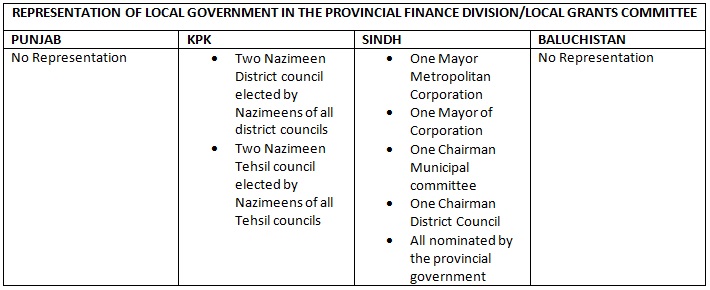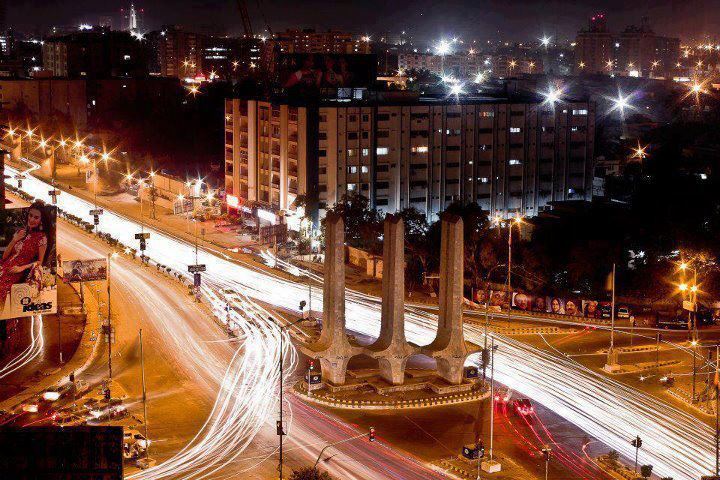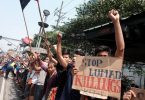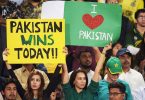Introduction
Local Governance means “Building stronger communities”. Institutions play an important role in establishing the local government system. Local institutions means, “sub – units” at the public level to which the government gives some authorities so that they may be able to solve the local problems with the local resources.
There are three levels of government: local, state and federal level. Local government is the first level and is responsible for matters close to local communities. Sub-national institutions comprise of one of the most important opportunity for poor people, minorities and women to contribute in the development of their communities and influence the decision-making processes that are directly relevant to their lives. Important opportunities for poor people, women and minorities to participate in the development of their communities are to be found in local institutions of governance. The basic services for citizens are provided by local governments. Basically, their aim is to improve their capacity and ability to become better administrators. Through local governance government can promote peace and reconciliation at the local level. They can avoid conflict and promote trust into programs and services.
Local government system is very important for the establishment of democracy at grass-root level. The regime of Gen. Pervez Musharaf, introduced the local government system. This system of local government was implemented on August 14, 2001. The essence of introducing the local government was to strengthen the people at lower level and to transfer power from representatives to the masses. The system of local government was projected to solve people’s problem at the local level, allow public involvement in decision-making and make sure the provision of speedy justice. The main purpose of this system was that the local governments would be accountable to the citizens for all their decisions. It would allow the proactive elements of society to participate in community work, development related activities and would remove rural-urban divide. The new local government plan was an endeavor on part of the Military Government to lay the foundations of a durable and stable democracy. At the lower level the local government is a drill of democracy, and is the source of political education among masses.
Local Government system in Pakistan:
The history of local government elections inside Pakistan started from the regime of General Ayub Khan (1959-1969). In 1959, he issued an ordinance through which non-party local government “basic democracy” elections were held. In developing countries like Pakistan these institutions represent the powers of local groups. Zia-ul-Haq, after coming into power, reviewed the system of local government and established this system on strong footings, which progressed step by step. Local government ordinance (2001), Devolution Plan set up the National Reconstruction Bureau as a think tank. Its mission was to establish the real democracy in the country with the help of reconstructing the institutions of state.
The present local government system was introduced in 2001, during the regime of General Pervez Musharaf for developing the democracy for strong supremacy with another objective of transferring power to the representative of the people. For this purpose, National Reconstruction Bureau (NRB) was established on 18 November, 1999. This bureau was working on reinstallation of institutions that were shaped under the local government system. The devolution programmed in Pakistan was established in five phases. During these phases elections started from the smaller districts towards the larger cities and districts. It was believed that each phase would improve the implementation of every coming phase.
In the first phase the elections were held on 31st December, 2000 in the eight districts of Punjab, three districts of Sindh, four districts of K.P.K. and three districts of Baluchistan. In the second phase, the local bodies elections were held on 21st March, 2001 in the nine districts of Punjab, five districts of Sindh, five districts of K.P.K. and one district of Baluchistan. In the third phase, the local bodies elections were held on 31st May, 2001 in the districts of Punjab including Faisalabad district, two districts of Sindh, one district of K.P.K. and five districts of Baluchistan. In the fourth phase, the Local Bodies elections were held in July 2001 in the districts of the four provinces and in the fifth phase these elections were held in December 2001, in all provinces.
The current local government was shaped particularly to fulfill the requirements of the districts. Local governments were formed at three levels: district, town and the union. District government consists of district (Zila) Nazim and district Naib Nazim, an elected body and its administrative structures. For the more active involvement of people in the community development of grass roots organizations were established such as village councils/ neighborhood councils and citizen community boards.
Political structure & system
Since August 2001 it had been a period of transition as well consolidation. The local government representative and elected Nazim’s relationship with MNAs/MPAs was a very difficult one. Miss-collaboration was created due to this new political structure. The local government ordinance, 2001 had developed political power and decentralized administrative and financial authority for good governance and effective delivery of services through institutionalized participation of the people at grass roots level.
Local Governance and Decentralization
Local governance indicators may inform local policy and strengthen local accountability. Local governance assessment may also be useful at a national level in order to enhance decentralization policies, strengthen capacities and contrast trends across cities or districts.
Local governance assessments can be useful for:
- Capturing gaps and constraints in policy implementation.
- Identifying specific capacity building needs and monitoring results of capacity building efforts.
- Formulating change plans and soliciting donor or peer assistance for improving specific aspects of governance.
- Creating a platform to involve civil society and the private sector in local governance.
- Providing an objective account of achievements of local elected leaders, especially at times of re-elections, and thus building accountability.

Case Study; Structural Analysis of Karachi
- In 1947, Pakistan became an independent country, Karachi was chosen as the capital of Pakistan. During this period, the city offered shelter to a huge bulk of migrants and refugees that came from the Indian province. In 1960, the capital of Pakistan was first moved to Rawalpindi and then to Islamabad. Nevertheless, Karachi never lost its importance as the economic centre of Pakistan. The Municipal Corporation of Karachi was upgraded to Metropolitan Corporation in 1976. Again on 14th August 2001, City District Government of Karachi was reorganized in 18 town administrations and 178 union councils.
Structural Analysis of provincial assemblies from year 2001 to 2012
Devolution of Power Plan was presented by Pervez Musharraf in 2000. This policy was for the reconstruction of local government. It was a plan to transfer the evolution of power and “responsibility” to the grass roots level. The basic principle of the Devolution Plan was that the local government would function clearly within the provincial framework. For the strong local government system, the Provincial Local Government Ordinance, 2001 was included for a period of six months in the sixth schedule of the constitution. Amendment in ordinance can be made by the president after discussion with the prime minister. Though the devolution of power, responsibility and decentralization of authority was a permanent development and convincing improvement in the delivery of services at the district level, it would increase the image and efficiency of governments at the grass roots level. Because it was an important factor of good governance to provide justice.
The local government was based on five ground rules:
- Devolution of political power
- Decentralization of administrative authority
- De-concentration of management functions
- Diffusion of the power – authority nexus
- Distribution of sources
In August, 2001 elections were held under the new local government ordinance. Elected local governments had been successfully setup at all tiers. The local governments had also successfully completed their tenure and new elections of local governments were then held in the year 2005. Under the provincial ordinances, however, twice elections were held in all the provinces in years 2002 and 2005, on non-party basis.
Political parties were actively involved in the elections at every stage – selecting candidates, campaigning and polling in Karachi. After the elections all parties had also expressed their views to the conduct of the elections. The ruling PML and MQM described the local government elections as a genuine democratic exercise which will strengthen participatory governance and the federal cabinet described election as 90 per cent free, fair and transparent with only 8-10 per cent complaints about irregularities. The opposition also demanded for resignation of the government for rigging in the local government election 2005.
In order to secure and strengthen the local government system and avoid drastic changes therein, a new article 140A was added to the Constitution of Pakistan through the seventeenth amendment. By virtue of that addition, it was provided that each province shall, by law, establish a local government ordinance, 2001 system of local government and devolve political, administrative and financial responsibility and authority to the elected representatives of the local governments. This provision was supplemented by adding another provision through the eighteenth amendment to the constitution, to the effect that the future elections of local governments shall be conducted by the Election Commission of Pakistan instead of Provincial Election Commissions. But after the expiry of the terms of local governments in December, 2009, the new elected provincial governments openly expressed their intention to repeal the 2001 ordinances and introduce new legislation on the subject.
In view thereof, holding of local government elections were postponed on one ground or the other. No doubt that there were certain administrative problems in implementation of the local government system under 2001 ordinances, but those could be removed by making minor changes in the statutes. Furthermore, there was hidden jealousy amongst national and provincial legislators who were against the devolution of their powers, particularly in development work to the local governments. Above all, the bureaucracy which had, due to absence of non-elected governments for a long period, become very strong did not like the divesting of their powers to the elected representatives of the people. The province of Sindh initially revived the 1979 law and then replaced it with Sindh Peoples’ Local Government Act, 2012, and once again replaced it in 2013, with Sindh Local Government Act.
Responsibilities of District Government
According to the Sindh Local Government Act 2013 the provincial local government commission distributes some functions and responsibilities to the district government.

Political gaps from year 2013 to 2015:
After the general elections of 2013, the local government act and elections have been a major issue, the bone of contention between MQM and rest of Sindh.
On August 19th 2013, the Sindh assembly passed the Sindh local government bill 2013 as per their wishes. But the Sindh provincial government failed to consent and satisfy MQM on the newly formulated local government bill, so the disagreement came between the two biggest ruling parties of Sindh.
If we analyze the local government system implemented during the Musharraf regime without any doubts the local body act 2001 delivered par performance to the people of urban Sindh including Hyderabad, Mirpur Khas and Nawabshah. The main purpose of that act was to strengthen the common elected man and transfer the power to the grass-roots level. A lot of work has been done in Karachi by Naimatullah Khan the mayor of Karachi from August 2001 to June 2005 during Musharraf’s tenure when most of the projects were proposed and approved. Money was allocated and projects initiated. Mr. Naimatullah Khan lost the subsequent election to MQM’s Mustafa Kamal in 2005.
The debate between MQM and rest of the Sindh assembly is on the two bills. One was local body ordinance 1979, which is amended by PPP and their allies, approved as a local body bill 2013 and the other being the local government act 2001, passed in the Musharraf era. They also argue to come up with a new bill that gives power to the people.
Recommendations:
- Clarify which provisions of the representation of people apply to local government polls in Sindh, especially the aspects which remain undefined by the provincial law.
- Uphold constitutionally permitted independence of the ECP by empowering it, rather than the government, to make the rules.
- Give ECP the powers to appoint returning officers and revise the law to clarify the timing of their appointment, setting up of polling stations and issuance of voters’ lists.
- Provide more than 15 days to train polling staff and publish a list of officials before the election.
- Amend the law to indicate the election system and the basis for deciding the number of members of any elected body.
- Consider a direct popular election system.
- Explain how panels would be formed and operated.
- Limit government powers to change the number of members of a committee.
- Specify the utmost timeframe between elections and electing members to reserved seats.
.







